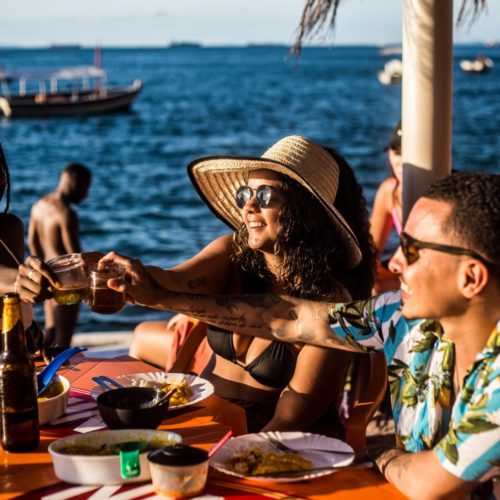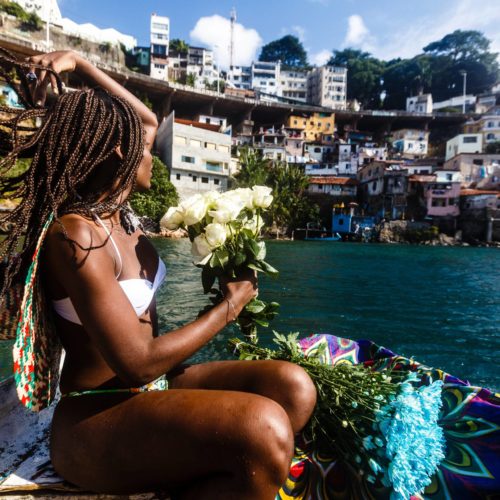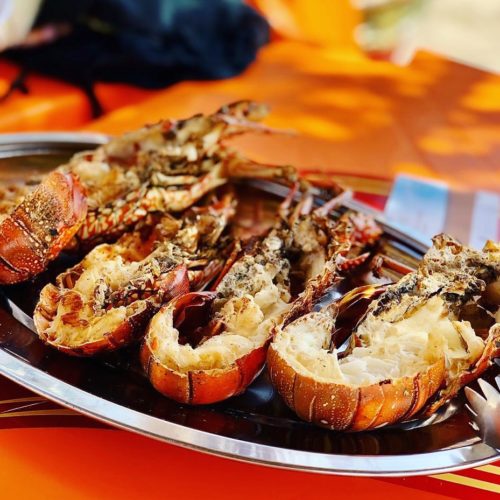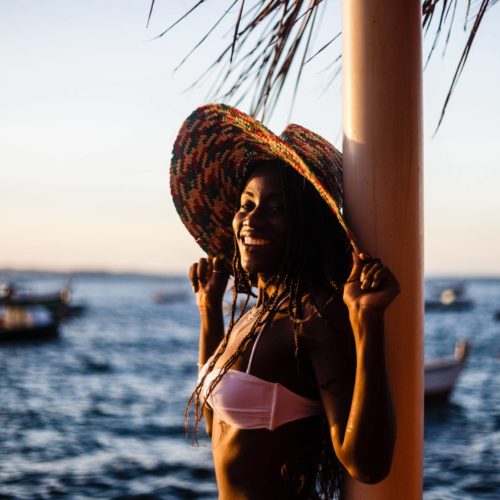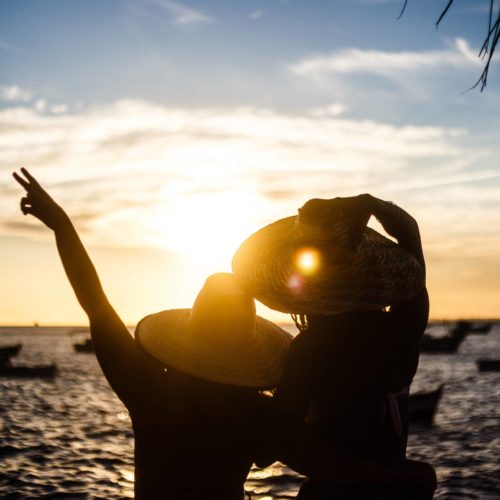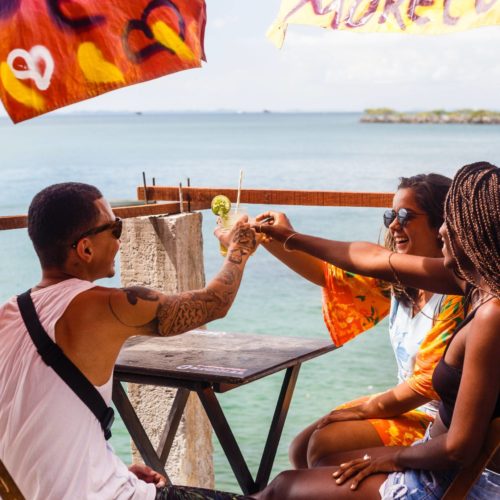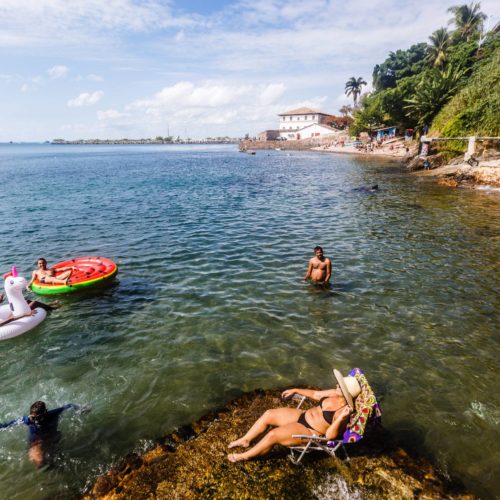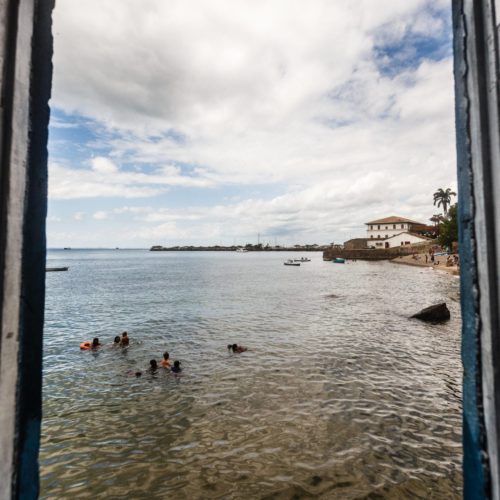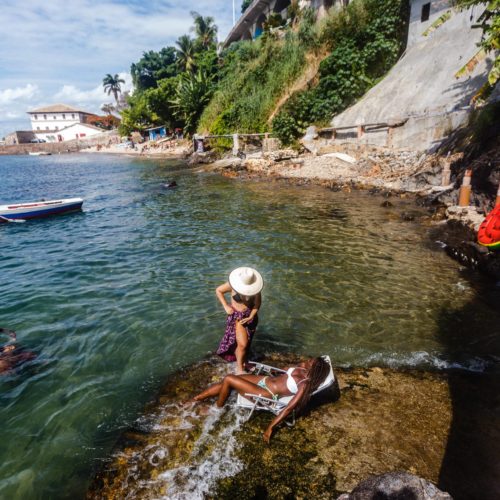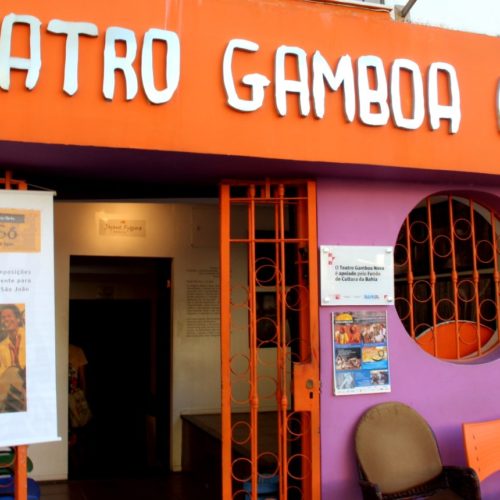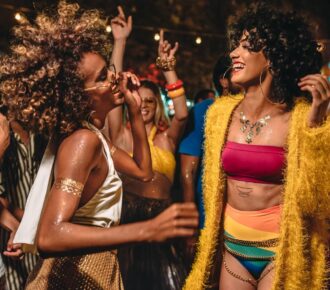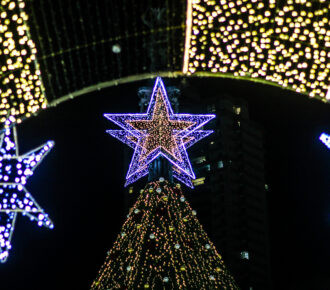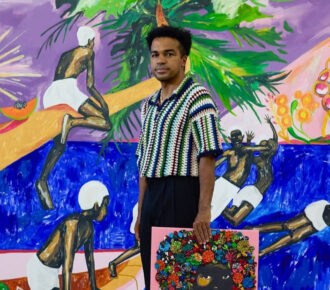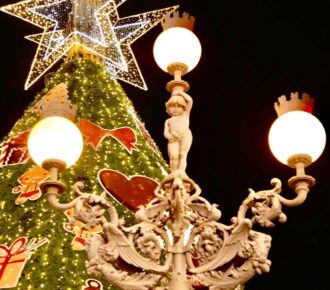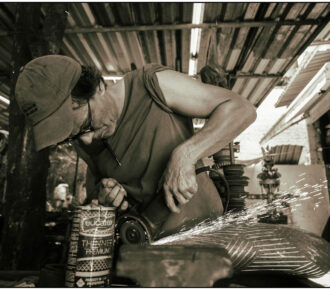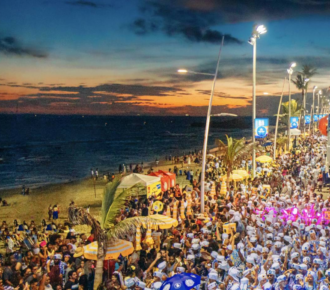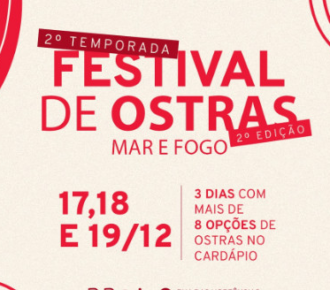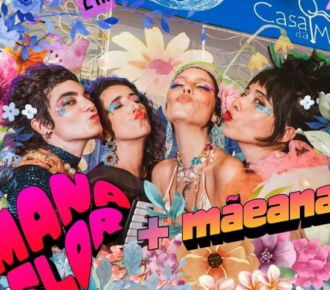
A paradise of beauty and one of the best tours in Salvador
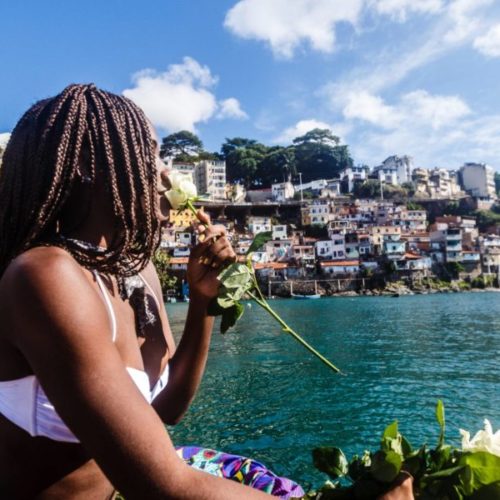
Gamboa – which houses communities of Solar do Unhão, Gamboa de Cima and Gamboa de Baixo – is bordered by Contorno Avenue and is embraced by the All Saints Bay. No, this is not an exaggeration. The residents of these locations have a permanent view of the calm sea. For the post office and Google, these places are part of the Dois de Julho neighborhood, but for residents and regulars, this piece of land is a city in itself.
The tour has to start at Solar do Unhão, which is part of the Museum of Modern Art. In addition to the MAM beach (practically inside the MAM sculptures park), the surrounding area receives the Jam no MAM project in the summer, which promotes jazz shows at sunset. There, you can also see graffiti from MUSAS, Salvador’s Street Art Museum, coloring the community’s walls and facades.
Within the Solar do Unhão community there is Dona Suzana’s beloved restaurant, with its classic stingray moqueca (and lots of affection). In Gamboa, there is Bar da Mônica, which in addition to delicious food has a pier with infinite views of All Saints Bay. There are two ways to get to Gamboa: by boat or on foot through Rua dos Ingleses. This whole area is an invitation to practice water sports like the stand-up paddle (SUP), mainly starting from “Praia das Pedrinhas”, as the Praia do Solar is known.
Gamboa was part of the first habitable space in Salvador due to its proximity to the old port in the Comércio region. In 1962, the construction of Lafayete Coutinho Avenue, known as Contorno Avenue, defined the limits of the neighborhood between Gamboa de Baixo and Gamboa de Cima. Both are next to the also traditional Dois de Julho neighborhood.
The remains of Fort São Paulo make up the scene of Gamboa de Baixo. It emerged as part of the city’s defense plan and was inaugurated in 1722. The fortress, now in ruins, is the place chosen by the community to hold some community meetings and activities.
Learn more about Gamboa: one of the best tours in Salvador
Strong culture
Close to Carlos Gomes Avenue, next to Largo dos Aflitos is one of the most important cultural spaces in Salvador: the Gamboa Theater. Although small in size – it has only 80 seats – it hosts important shows and exhibitions in the city. On its border, there is the “Passeio Público de Salvador”, where we find the traditional Vila Velha Theater and the sumptuous “Palácio da Aclamação do Governo”. The Passeio Público overlooks Gamboa neighborhood and the All Saints Bay.
Stones beach
Imagine a beach with a unique view of the sunset on Itaparica Island and with pebbles instead of sand. Add interesting people walking around, boats by the sea for possible short trips and SUP for sportsmen. This pearl is found between the Museum of Modern Art of Bahia (MAM) and the hillside of Campo Grande. The “prainha” of Gamboa de Baixo (or Solar do Unhão beach), as it came to be called by the local community, is a mandatory stop for anyone visiting Salvador. The beach – which offers a peaceful sea bath – is great for taking pictures.
Just next to there, practically inside the MAM sculptures park, is “Prainha do MAM”. This strip of sand, which lies between the Museum of Modern Art of Bahia and Bahia Marina, has a small cove with calm and crystalline waters. The place is the sensation of the moment, frequented by residents, tourists and mainly young hipsters, which has turned it into one of the most bustling spots of recent times. Typical of Salvador!
Where else would you find a beach inside a museum, right?
Nice food
Ver essa foto no Instagram
Gamboa has gastronomic gems from Bahia for all tastes and moods. At the upper part of the neighborhood, the Chez Bernard Restaurant, located at Gamboa de Cima Street, is the first French restaurant in the city. Inaugurated by the French Monsieur Bernard Goethals in 1963, it is a reference in international cuisine.
Regional food, however, is the most famous in the region. Two places stand out: Bar da Mônica and ReRestaurante Dona Suzana. Both are specialized in seafood, with emphasis on moquecas. Dona Suzana was also a character in the Netflix Street Food series, talking about her passion for the food that attracts tourists and Bahians.
The “A Novidade” bar is also worth a visit. Opened in the summer of 2019, it became known for its colorful buoys, the fried fish, the slab with chairs facing the sea and for being owned by two members of MUSAS, Salvador’s Street Art Museum.
Ivete, Anitta and Netflix surrendered to the charms of the neighborhood
The region is the darling of famous people to record audiovisual productions. Recently, Gamboa beach was the setting for the recording of the single “Bola Rebola”, by singer Anitta, and also scenes from the soap opera “Segundo Sol”, on TV Globo. Netflix also recorded an episode of the Street Food series there, showing the delicacies of the local cuisine.
Neighbor of the community, the singer Ivete Sangalo tries, from time to time, the gastronomic delights of Gamboa and also practices SUP with her husband Daniel Cady. The two, by the way, started dating after meeting in the Gamboa Sea.
Gamboa de Baixo and the Solar do Unhão community are wealthy in cultural and commercial activities. Look for the residents’ association and learn more.

